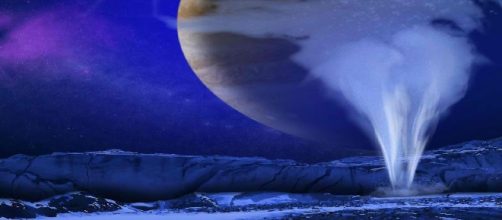Due to recent activity observed in one of Jupiter´s Galilean moons, NASA will held a press conference on Monday, September 26, 2016 at 2:00 p.m. EDT. The teleconference is intended to communicate new discoveries of the icy moon Europa, as seen on images captured by Hubble Space Telescope. The findings re the results of observations that provided evidence of natural activity suggesting the existence of a subsurface body of water underneath the surface of the icy moon.
Icy moon-Europa
This is one of Jupiter’s moons and is the smallest of the four Galilean natural satellites of Jupiter and the sixth largest moon in the solar system.
Europa is mainly made of silicate rock and is covered by a water ice crust. It´s believed that its core might be of iron and nickel. Its crust, whose surface features show cracks and streaks, is smooth and it´s believed that an ocean of water exists beneath its interior. It´s thought that tidal heating causes the water contents beneath Europa´s crust to remain liquid, while the same process drives Europa´s ice movement, similar to plate tectonics on earth.
Europa´s exploration
In 1973, Pioneer 10 was the first spacecraft to capture the first images of Europa. In 1979, Voyager 2 took more detailed images of the icy moon, leading scientists to consider the possibility of a liquid ocean underneath Europa´s icy crust.
From 1995-2003, the Galileo Space probe studied Europa and other Galilean moons with the great detail and in 2007, New Horizons mapped the icy moon, as it pass by Jupiter´s system while on its way to dwarf planet Pluto.
Searching for life beyond earth
The idea of microbial life underneath Europa´s subsurface has made it a possible target for future missions. The aim of these missions involve the study of Europa´s chemical composition and the search for possible life beyond earth´s boundaries. If attempts are made to examine Europa, the robotic missions should have to be well equipped to endure the strong levels of radiation in Europa and the Jovian system as a whole.
Future missions intend to investigate the habitability of Europa and to explore possible landing sites for a future lander. This will open new perspectives about the composition and possible microbial life on Europa, as well as the origins of life on earth.

